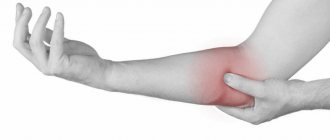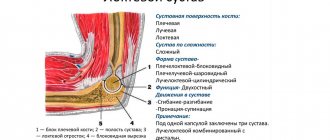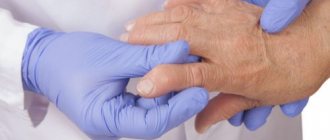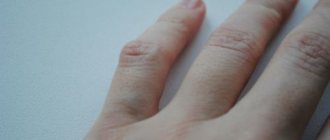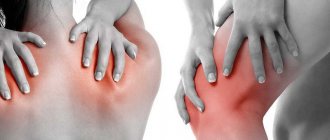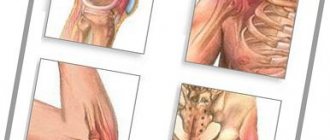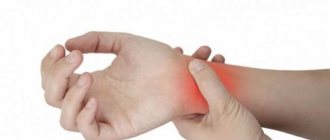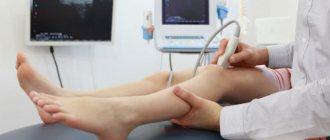The structure of human hands distinguishes him from representatives of other biological species. Thanks to them, we can not only serve ourselves, but also perform a wide variety of work. The fingers of the human hand are parts of the upper limbs, which in the process of development received a very important functional load. That's why, when your fingers hurt, it becomes difficult to hold a fork or spoon, type text on a PC, cook food, or even just lace up your shoes.
The reasons why your fingers hurt can be different. In addition to being susceptible to injury, there are a number of medical conditions that can affect their mobility. In addition, pain in the joints of the fingers can be caused by inflammatory processes (arthritis).
At CELT you can get advice from a specialist algologist.
- Initial consultation – 4,000
- Initial consultation with the head of the Pain Clinic - 4,500
Make an appointment
Causes of pain in fingers
If you want to find out why your fingers hurt, contact the CELT Pain Clinic. We employ experienced specialists of various profiles who will conduct a diagnostic study and prescribe the optimal course of treatment, thanks to which you can again live a full life.
Finger injuries
An injury such as a bruised finger can occur if you fall from a small height or hit your hand with a blunt object. Depending on the force of the impact, the skin and blood vessels may be damaged, which will lead to the formation of a hematoma; A bone fracture is also possible.
Carpal tunnel syndrome
The development of carpal tunnel syndrome is provoked by compression of the median nerve located in it. Clinical manifestations of this disease include:
- pain that is localized on the inner surface of the thumb;
- index finger pain;
- feeling of numbness in the skin of the palm;
- decrease in muscle volume in the area of the eminence of the first finger;
- decreased precision of fine motor skills of the hand.
Without timely treatment, the nerve will no longer be able to perform its functions, which will lead to the inability to perform small movements of the fingers and even disability.
Raynaud's syndrome
Raynaud's syndrome is a frequent companion to pathologies such as rheumatoid arthritis, scleroderma, and other connective tissue diseases. It occurs due to a violation of the tone of the capillaries and small arteries of the fingers and is characterized by the following symptoms:
- a sharp narrowing of blood vessels, leading to pallor of the skin of the fingers and numbness, which is often felt as pain;
- a sharp dilation of blood vessels, leading to redness of the skin of the fingers (even cyanosis) and a feeling of burning pain, swelling.
Polyosteoarthrosis
The joints of the fingers hurt with a pathology such as polyosteoarthrosis. Most often it occurs in women after 45 years of age. In addition to pain in small joints, it is characterized by the following:
- the presence of nodular formations that appear symmetrically on both hands;
- deformation of the hands;
- periodic inflammation, redness and swelling of the affected joints, which begins after overexertion.
Rhizarthrosis
Another disease that causes pain in the joints of the thumbs is rhizarthrosis. It affects the joint of the thumb and is accompanied by pain that becomes more intense during movements, crunching of the joint, deformation of the thumb bone, and limited movement in the affected joint.
Rheumatoid arthritis
A pathology such as rheumatoid arthritis is expressed in inflammatory processes of the metacarpophalangeal joints of the index and middle fingers. It can occur due to stress, hypothermia or acute respiratory disease and is characterized by the following clinical manifestations:
- intense painful sensations, often symmetrical on both arms and which are especially evident in the morning and in the second half of the night;
- swelling and redness of the joints and a local increase in skin temperature over them;
- inability to clench your hand into a fist;
- limited movements in the hands.
More about rheumatoid arthritis
If the patient has not completed the course of treatment, the hand may become deformed and its functionality will be completely lost.
Gouty arthritis
One answer to the question “Why do my toes hurt?” the answer may be: “Because of gouty arthritis.” In most cases, the joint of the 1st toe suffers from salt deposits, but often this disease also affects the joints of the hands. Symptoms include:
- sharp pain in the toes and hands;
- inflammations that occur in attacks, lasting from 3 to 10 days;
- redness and swelling of the joint;
- bluish discoloration of the skin over the affected joint.
If left to chance, the disease can cause joint destruction and hand deformation.
Read more about gouty arthritis
Prevention of joint diseases
The following recommendations will help protect yourself from joint diseases:
- try not to overcool your hands;
- stop smoking and consuming large amounts of alcohol;
- eat more fresh fruits and vegetables and as little canned and spicy foods as possible;
- If you have an acute respiratory viral infection, be sure to get treatment, do not try to endure the disease “on your feet”;
- watch your weight;
- Don't snap your fingers.
So that you don’t have to ask the question: “How to treat if your thumbs hurt?”, periodically perform a simple exercise to prevent carpal tunnel syndrome, especially if your activity involves a lot of work on a PC: raise your thumbs and clench the rest into a fist (gesture of approval). Rotate your thumbs clockwise and counterclockwise. Specialists from the “Hello!” network of clinics will help you determine the exact cause of the discomfort. Are you trying to figure out what to do if the joint on your finger hurts or is swollen? Make an appointment with us - experienced doctors will perform an examination using the latest diagnostic equipment and prescribe the most effective course of treatment using modern non-drug methods.
Diagnosis of finger pain
CELT specialists recommend seeking medical help if you experience even a slight feeling of numbness in your fingers. Along with pain, this is a reason to visit a rheumatologist or neurologist in our Pain Clinic, conduct diagnostic tests and treatment.
In order to correctly make a diagnosis, in addition to a clinical examination and history taking, other diagnostic tests are carried out:
- radiography;
- manual muscle testing;
- ultrasonography;
- Magnetic resonance imaging.
Carpal tunnel syndrome
The disease has progressed particularly rapidly in the last two decades, which is associated with an increase in the number of people spending time at the computer. One hand is constantly on the mouse, in an awkward position, tense. With this disease, discomfort appears gradually. As a rule, they do not affect the little finger.
Numbness in one arm is usually a sign of carpal tunnel syndrome
Pain in the form of numbness can be observed from the elbow to the fingertips, and sometimes even moves to the forearm area. Most often, this situation concerns exclusively the right hand, since this is the working hand for most people.
Treatment for finger pain
Treatment for pain in the fingers directly depends on the cause that caused them. Our specialists direct all their efforts to eliminating it, since this is the only way to achieve a long-term positive result and save the patient from suffering forever.
Systemic therapy with the use of non-steroidal anti-inflammatory drugs and analgesics can relieve inflammation and painful symptoms. In addition, for diseases such as osteoarthritis, drugs are used that improve the protective characteristics of cartilage. Massage, physiotherapy and manual therapy have a good effect.
Treatment at the CELT Pain Clinic allows you not only to eliminate pain, swelling and stop inflammatory processes, but also to strengthen your finger joints, normalize metabolism and blood circulation!
We will give you back the opportunity to live a normal life!
Make an appointment through the application or by calling +7 +7 We work every day:
- Monday—Friday: 8.00—20.00
- Saturday: 8.00–18.00
- Sunday is a day off
The nearest metro and MCC stations to the clinic:
- Highway of Enthusiasts or Perovo
- Partisan
- Enthusiast Highway
Driving directions
Treatment of arthrosis of the fingers
Containing finger arthrosis in the early stages allows you to completely eliminate the external symptoms of the disease, which affect the quality of life. However, the therapy is complex, multi-vector in nature - it includes not only the use of pharmaceuticals, but also physical influence, and even occupational therapy. To combat a chronic disease, it sometimes requires a review of diet, daily routine, working conditions and workplace organization.
Drug treatment
Treatment of osteoarthritis of the fingers, as a rule, begins with the elimination of pain, for which immobilization of the hand with a splint or orthopedic bandage and analgesic tablets, creams and ointments are used. The rest mode helps to rehydrate the cartilage and restore its elasticity. In the presence of severe inflammation and swelling that disrupt the trophism (nutrition) of tissues, the doctor prescribes non-steroidal anti-inflammatory drugs (NSAIDs), which restore blood circulation in the fingers. Steroid hormones are prescribed according to indications. Osteoarthritis caused by infectious arthritis requires local administration of antibiotics.
Taking chondroprotectors has proven to be one of the most effective measures at any stage of the disease. Chondroitin sulfate and glucosamine must be taken in courses, about 6 months a year - the effect appears after a few months and is long-term.
If the proposed treatment does not relieve pain, analgesics can be injected directly into the joint. Often this procedure involves the use of special medicinal mixtures, which also contain chondroprotectors, hyaluronic acid, platelet-rich plasma (PRP therapy) and other agents aimed at regenerating cartilage tissue and eliminating friction.
Surgical intervention for arthrosis of the hands
In the final stages of the disease, surgery may be performed if indicated. As a rule, this involves washing the joint and eliminating osteophytes, reconstruction or formation of a destroyed joint, its stabilization (fusion) or endoprosthetics (still a rather unpopular measure in surgery of small joints of the hands).
Physiotherapeutic treatment
In most cases, the disease responds well to conservative physiotherapeutic treatment - however, it is carried out only in the remission stage, after the inflammation has been relieved. Hardware methods for treating deforming arthrosis of the fingers include electrophoresis, shock wave, UHF, pulse, magnetic therapy and others. Acupuncture is also effective.
Patients are recommended therapeutic massage and self-massage, which helps fight muscle tension and spasms, has a beneficial effect on the condition of ligaments, metabolism in the hand and fingers, as well as the amplitude of voluntary movements. For self-massage it is enough:
- rub your palms together until the skin becomes warm;
- rub each finger from base to tip;
- roll each finger in a slightly clenched fist, as if sharpening a pencil;
- quickly bend and straighten your fingers for 30 seconds, avoiding clenching them into fists;
- Place your palms together and press your fingertips against each other, pressing well for 1-2 minutes.
Includes treatment of arthrosis of the fingers and gymnastics. Use rubber balls and special wrist expanders, special cubes and other devices for developing fine motor skills in warm-ups. Modeling from clay or plasticine will not be superfluous. This will help keep the muscles toned and prevent the formation of large osteophytes.
You can also make warm baths at home with water (you should add sea salt, essential oils, herbal decoctions), paraffin or clean sand - heating the compositions will speed up the removal of decay products and provide quick access to nutrients.
Diet for arthrosis of the fingers
Patients are advised to follow a non-strict diet that excludes smoked, too salty foods, alcohol, as well as foods with artificial colors, steroids, and preservatives. Diet is especially important in the treatment of metabolic arthrosis - in this case it is completely determined by the attending physician. As a rule, patients are recommended meals rich in animal and plant collagen and other gelling substances. Food should contain a minimum of “empty” calories and fully meet the body’s daily need for vitamins, macro- and microelements. It is extremely important to drink enough water with electrolytes, such as mineral water or an isotonic drink.
You may be interested in:
Osteochondrosis of the thoracic spine - is it possible to live without pain? Infectious arthritis: everyone is susceptible Head spinning: how to deal with osteochondrosis of the cervical spine Arthrosis of the toes Osteoarthritis of the knee joint
Extracarpal processes:
- ✅ Cervical or thoracic osteochondrosis, radicular syndrome, spinal tumors, etc. Here pain can occur in all fingers at once, or in the last two. Patients describe pain as if something were shooting into their arm. The pain may intensify with a sudden change in body position, sneezing, coughing, or bending over.
- ✅ Vascular crises, in which pain is accompanied by paresthesia, changes in the color of the skin of the fingers, and cold temperatures. Attacks can develop several times a day, including under the influence of stressful psychological factors.
- ✅ Occupational diseases, for example, vibration disease.
- ✅ Polycythemia - an increase in the number of red blood cells. Characterized by a slowly progressive pain syndrome as a result of increased blood flow to the vessels, including the fingers.
- ✅ Stroke, brain tumors.
Arthritis
Next, we consider the main types of the pathological process and the features of their course.
Rheumatoid arthritis
This disease is considered one of the most dangerous. It is also dangerous because of the extremely rapid progression and worsening of the severity of the disease. At the initial stage, a person feels discomfort and stiffness, and it does not appear in the evenings, when pain can be associated with fatigue, but in the mornings, when the blood flow is not very active. The skin in this area is dry.
Subsequently, stiffness gives way to pain, and the joints begin to deform. The result of this condition can be curvature of the fingers. This process is irreversible, that is, if a person has brought himself to such a state and has not stopped the process of destruction of the joint, then it will be impossible to return to its former anatomical shape.
The disease is treated with anti-inflammatory and hormonal drugs, as well as drugs that reduce the activity of one’s own immune cells.
Psoriatic arthritis
This autoimmune disease occurs in 5% of all cases. With this diagnosis, the joints are not affected simultaneously, but gradually, affecting finger by finger. Most often, the symptoms affect the thumb and middle finger. The clinical picture is asymmetrical, that is, it is quite likely that the signs will appear on only one arm, while the other will look completely healthy.
The nature of pain in psoriatic arthritis is aching and constant. It is treated with anti-inflammatory, hormonal and antipsoriatic drugs. Unfortunately, some patients have to struggle with the diagnosis throughout their lives. Even if long-term remissions occur, the likelihood of relapse does not disappear.
Gouty arthritis
It is generally accepted that the manifestations of gout affect only the legs, but the hands, or more precisely the fingers, can also be affected. The pain in this disease is very acute. Patients describe them as a burn. When touching these areas, local hyperemia may be noted. They are especially strong at night. Externally, the anatomy of the fingers changes little, with the exception of swelling in the area of the fingers, which can cause the skin to turn red and look painfully smooth and tight.
To make a diagnosis, a test for uric acid is required, and if its level is exceeded, then a diagnosis can be made and treatment can begin. Therapy necessarily includes anti-inflammatory drugs, analgesics, as well as drugs to remove uric acid from the body. Treatment will not be effective without adjusting the diet. Such a diet should now become for the patient not a temporary, but a permanent measure to maintain health.
